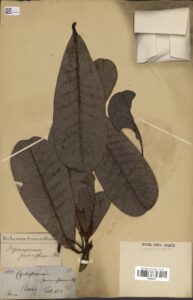How to Propagate Campnosperma gummiferum

Tapping into the Terai Tree: Propagating the Mighty Campnosperma gummiferum
The Campnosperma gummiferum, more commonly known as the Terai tree or simply Campnosperma, is a majestic giant of the plant world. Native to the humid tropics of Southeast Asia, this evergreen tree, reaching heights of over 100 feet, boasts a rich history of human use and ecological importance. From its durable timber to its medicinal properties, the Terai tree has much to offer. But have you ever wondered how these incredible giants are cultivated? Today, we delve into the world of plant propagation, specifically focusing on the techniques used for the Campnosperma gummiferum.
Seeds of Success: The Primary Route
The most common and arguably the most successful method of propagating the Campnosperma gummiferum is through its seeds. Here’s a simplified breakdown of the process:
-
Seed Collection & Preparation: Mature fruits, turning from green to brown, are collected, and the seeds are extracted. A thorough cleaning process follows, removing any fruit pulp or debris that might harbor fungus and hinder germination.
-
Pre-treatment for Germination: The Terai tree seeds have a hard outer coat that often requires pre-treatment to encourage germination. Soaking the seeds in water for 24-48 hours can help soften the seed coat. Some growers also lightly scarify the seeds, using sandpaper to nick the outer layer, promoting water absorption and faster germination.
-
Sowing the Seeds: The pre-treated seeds are sown in a well-draining potting mixture, lightly covered with soil, and kept consistently moist.
-
Providing the Right Conditions: The seed trays are placed in a warm, humid environment, mimicking their natural tropical habitat. A greenhouse or a warm, bright location indoors can provide ideal conditions.
- Patience is Key: Germination can take anywhere from a few weeks to a couple of months. Once the seedlings emerge and develop a strong root system and a few true leaves, they can be transplanted into individual pots or directly into the ground, depending on your climate and planting zone.
Beyond Seeds: Exploring Other Propagation Methods
While seed propagation remains the primary method for Campnosperma gummiferum, some other techniques can be employed, though they might require more expertise and specific conditions:
-
Cuttings: Propagating from cuttings involves taking a section of healthy stem and encouraging it to develop roots. This method requires specific hormone treatments and controlled environmental conditions to be successful.
- Air Layering: Air layering involves making a wound on a branch and encouraging root development while still attached to the parent tree. Once roots are established, the branched is then separated and planted.
These alternative methods, however, are less commonly used due to lower success rates compared to seed propagation.
Cultivating Giants: Factors for Success
Regardless of the chosen method, several factors play a crucial role in successful Campnosperma gummiferum propagation:
- Soil Conditions: Well-draining soil with good water retention capacity is crucial to prevent waterlogging and root rot.
- Sunlight Requirements: As a tropical species, the Terai tree thrives in full sun to partial shade.
- Watering Needs: Consistent moisture is essential, especially during the initial stages of growth.
- Pest and Disease Control: Regular monitoring and appropriate preventive measures can help keep your saplings healthy.
Propagating the Campnosperma gummiferum might seem like a daunting task, but with patience, the right knowledge, and a dash of green-thumb magic, you can successfully cultivate these majestic giants. Whether you’re a seasoned plant enthusiast or a curious beginner, remember that each seed holds the potential for a towering testament to the wonders of nature.